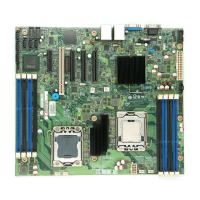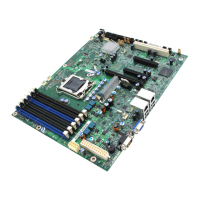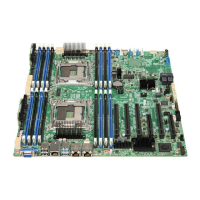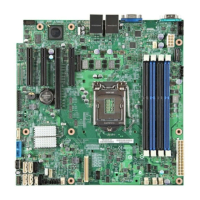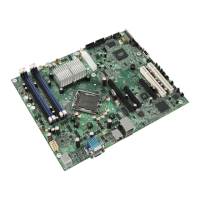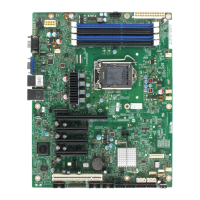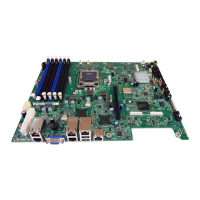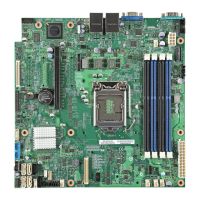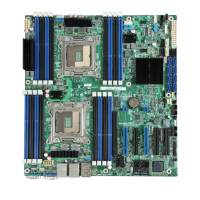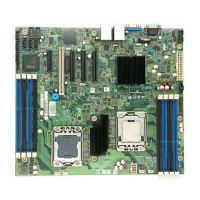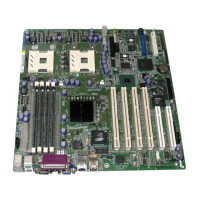System Management Intel® 5000 Series Chipsets Server Board Family Datasheet
Revision 1.1
Intel order number D38960-004
120
4.14.2.2 Domain Maximum
Stepwise Linear T
CONTROL sub-records might have a flag set that indicates that the instance
provides the fan domain maximum PWM value. These sub-records do not contribute to the fan
speed as described above. Instead, the fan speed obtained through the table lookup procedure
is saved for later reference. When the final domain contribution is calculated, it will be reduced,
if necessary, to this domain maximum value. Hysteresis is not applied to domain maximum sub-
records.
4.14.3 Clamp
Clamp TCONTROL sub-records specify a single temperature value and direct the BMC to
increase the fan speed for the associated fan domain as necessary to maintain the value of the
corresponding temperature sensor below the clamp value. When the sensor reading exceeds
the clamp value, the fan speed contribution will increase over time until either the fan speed
reaches maximum speed or the temperature reduces to below the threshold. If the temperature
is below the threshold, the sensor’s contribution will be reduced over time until it goes to zero.
Fan speed changes occur in the step size specified in the sub-record.
These sub-records allow a scan rate to be specified that will lower the frequency at which the
sub-record’s contribution is recalculated. This can be used to allow time for the fan domain to
react and increase the system cooling before increasing the fan speed again.
Hysteresis, if specified, is only applied when the contribution direction might change from
positive to negative or vice versa. e.g., if the BMC previously increased the fan speed
contribution from a given clamp sub-record, it will factor in any specified negative hysteresis
when determining whether the “change direction” and start decreasing the fan contribution. If no
action is taken due to hysteresis, the BMC continues to remember the previous direction.
The sum for all calculated contributions of all Clamp T
CONTROL sub-records that are valid under
the currently active profile for that domain will be added to the maximum of all currently valid
stepwise linear contributions.
4.14.4 Sleep State Fan Control
Using the Set ACPI Configuration Mode command, the BMC may be configured to set the fans
to a fixed sleep state speed when the system is in the S1 sleep state.
4.14.5 Fan Redundancy Detection
The BMC supports redundant fan monitoring and implements fan redundancy sensors. A fan
redundancy sensor generates events when it’s associated set of fans transition between
redundant and non-redundant states, as determined by the number and health of the
component fans.
A single fan failure, or removal of a fan from a chassis that supports hot swap fans, in a
redundant fan configuration is a non-critical failure and will be reflected in the front panel status
as such.

